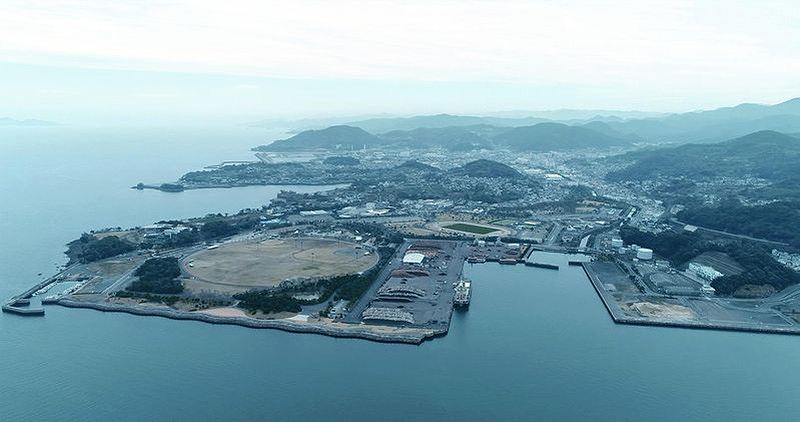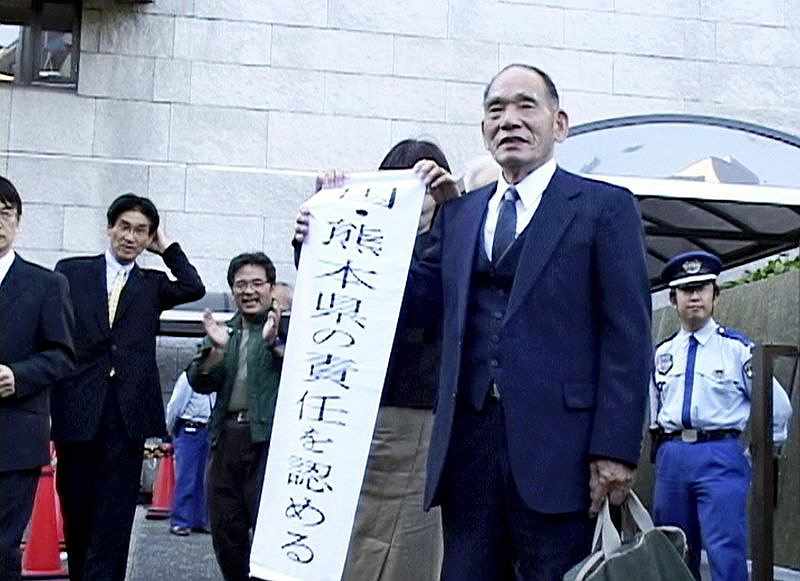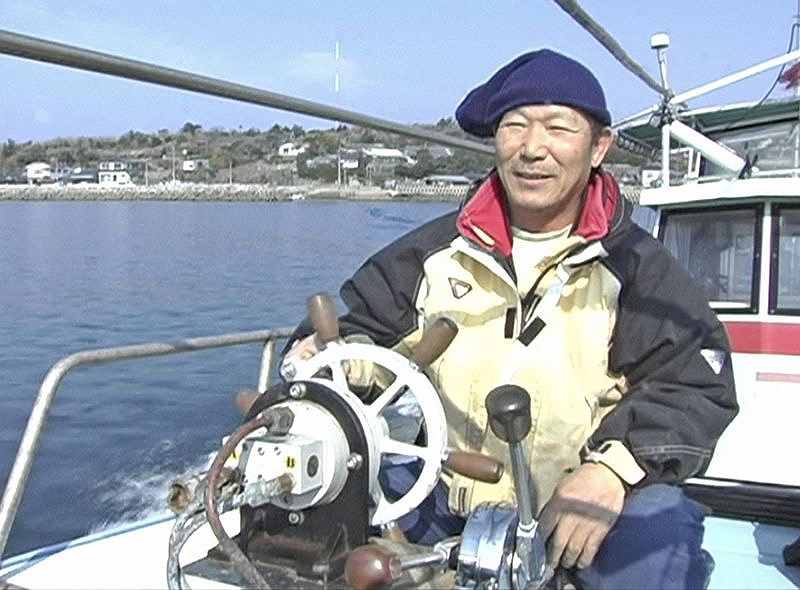
Kazuo Hara speaks in the interview. “I have a feeling that what we need now is a film that depicts a theme chosen as a mass, not in a pinpoint,” he said.
December 7, 2021
Renowned documentary film director Kazuo Hara has turned his lens to the issues revolving around Minamata disease in his new film, “Minamata Mandara.” Hara spent 15 years shooting this three-part film with a collective runtime of 6 hours and 12 minutes.
“It naturally became long,” Hara said.
Why?
Minamata disease is a neurological illness stemming from exposure to methylmercury that was discharged into the sea from a Chisso Corp. factory in Minamata, Kumamoto Prefecture.
Likening the documentation of this disease to baseball, Hara said he would be a middle reliever if the starting pitcher was the late Noriaki Tsuchimoto, a fellow documentary director who has made many films on the disease.
“I felt I should tidy up the issues to be able to entrust them to the closer,” Hara said.
It has been 65 years since the disease was officially recognized by health officials.
“While Minamata disease comes with its own distinct problems, it’s also become entangled with various other issues such as the way this country is and the problem of big cities versus regional municipalities. Together, they make the disease seem extremely complicated. Unless these problems are adequately laid out, understanding what to do will be hard for future generations. I felt that was the mission I had to undertake this time,” he said.
Court victory, but …
The film’s production began in autumn 2004 amid a Supreme Court ruling over a Minamata disease lawsuit filed by patients in the Kansai region. The national government and Kumamoto prefectural government were found responsible for the widespread damage from the disease and acknowledged that the patients were suffering to a greater extent than the government’s certifying standards measured. The authorities, however, would leave the standards unchanged.
“A documentary following a court case usually follows the same pattern; it starts with the first trial, then comes the second and the film ends with a victory at the Supreme Court. This time, though, the film opens with a moment of victory. As soon as one begins to wonder what’s going to unfold next, a problem naturally arises,” Hara said.

A scene from “Minamata Mandara”
After a new lawsuit is filed, the film follows a professor of Kumamoto University’s school of medicine who endeavors to prove a theory that will overturn the existing standards. At the same time, the film delves further into the daily lives of the patients, their families and everyone fighting against the issues surrounding Minamata disease.
“While this film depicts Minamata disease as terrifying, it also celebrates life by showing that those suffering from such a disease are working very hard and living in pursuit of life’s joy. It may look contradictory, but that’s the delight and difficulty of life as a human. I did my best to fully illustrate such a world, but it seems that even six hours is too short in the end,” Hara said.

A scene from “Minamata Mandara”
The director went to great effort to portray the emotions of those in the fight against the problem.
“What I’ve learned from Kirio Urayama and Shohei Imamura, directors I see as my mentors, is the most basic theory that films are essentially an act of depicting human emotions and sensibilities,” Hara said. “Moviegoers go to cinemas because they want to sympathize with or oppose characters’ emotions and gain some sort of stimulation in their lives. That’s why I have this desire to depict emotions that will grab the interest of the audience, which is a filmmaker’s instinct.”
By showing the circumstances from which such emotions are born, it’s possible to convey messages such as criticisms against power, he said.

A scene from “Minamata Mandara”
“Therefore, I feel I have to capture images that allow people a much deeper view into how the issues surrounding Minamata disease influence people’s daily lives, their livelihoods and their emotions — both the suffering and the joy.
Leaving problems unsolved
Problems and contradictions various people are saddled with on a daily basis are also depicted in the film.
“The history of action regarding this disease is a history of the company and the government, in other words, people with power leaving the problem essentially unsolved. When nothing is solved, per se, for such a long time, those concerned will think, ‘We eventually have to protect our lives by ourselves,’ and they will be driven to situations in which what benefits them opposes what benefits all. That’s the frightening part of people with power leaving the problem unsolved,” Hara said.
The film sheds light on such a structure and sheds light on the meaning of fighting despite setbacks.

A scene from “Minamata Mandara”
His 2017 film “Nipponkoku VS Sennan Ishiwatamura” (Sennan Asbestos Disaster), which follows the lawsuit over the government’s liability for health hazards caused by asbestos in the Sennan district in Osaka, was also a record of the battle of people confronted with an unreasonable reality. Why does he depict them as a group of fighters, unlike “Yukiyukite Shingun (Emperor’s Naked Army Marches on),” in which he focused on a powerful individual?
“Strong personalities can no longer stand in the tide of the changing times, or rather the power structure became stronger to such an extent, I think. The common people, or let’s say the regular people or those leading ordinary lives, must improve themselves. [My group of fighters depiction] is the result of my feeling that way,” Hara said energetically as well as sensitively.
The film is currently being shown at Theater Image Forum in Tokyo.
"Culture" POPULAR ARTICLE
-

Van Cleef & Arpels Dazzles with Art Deco Artisanry at Tokyo Exhibit
-

Disney’s ‘Twisted-Wonderland’ Animated Series Puts Villains in Spotlight: New Show Features School Inspired by Classic Disney Films
-

Ayumi Hamasaki’s Shanghai Concert Canceled Day Before Schedule as Part of Beijing Backlash
-

‘The World Masterpiece Theater Series’ Celebrates 50 Years; Animator Looks Back on Creating Anime Classics
-

Popularity of Piggy Banks Across Time and Place Seen at Bank’s Museum of Money Boxes in Hyogo Pref.
JN ACCESS RANKING
-

Tokyo Economic Security Forum to Hold Inaugural Meeting Amid Tense Global Environment
-

Keidanren Chairman Yoshinobu Tsutsui Visits Kashiwazaki-Kariwa Nuclear Power Plant; Inspects New Emergency Safety System
-

Imports of Rare Earths from China Facing Delays, May Be Caused by Deterioration of Japan-China Relations
-

University of Tokyo Professor Discusses Japanese Economic Security in Interview Ahead of Forum
-

Japan Pulls out of Vietnam Nuclear Project, Complicating Hanoi’s Power Plans
























